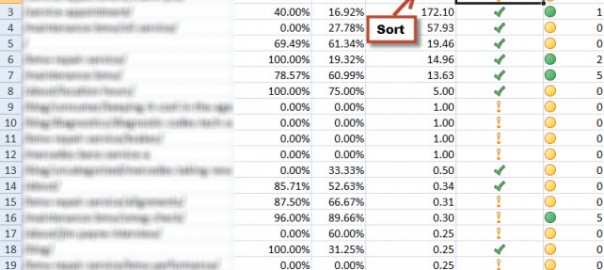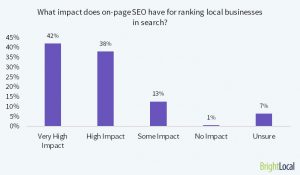How exciting is it to start fresh? You are looking at your new website – a clean slate – and imagine the possibilities, all the content you can create! So invigorating and exciting! A couple of years later your slate is full of posts, videos, infographics, pages, transcripts, interviews. How would you separate wheat from chaff?
With Panda watching our every move, it is important to evaluate website content on regular basis and mercilessly leave bad content on the cutting room floor. There are several things you can do to improve your website quality.
Drop Bad Practices
For those who are brand new to this blog or the topic of content marketing, here is old news – keyword stuffing and micro sites are completely out. Now, that you are up to speed, revise your content generation practices and get rid of tactics that produce low quality content: content scraping or automation, for example.
Stop focusing on your company and start catering to your customer. Stop selling too much and try to help your visitors instead. Slow down your posting rate, perhaps, for the sake of better quality.
Ask your friends to read your company blog. Are they bored? Content needs to be somewhat entertaining, even if it discusses printed circuits or security protocols. There is always a way to tell a story, put some twists in the plot, and share a valuable insight.
And pretty please start planning your content creation. Get a calendar going, assign writers, themes, deadlines, topics, goals. The goals will reflect why are you creating content and how you will measure its success.
Revisit Goals
Weather it is 5 goals or 10, your content marketing goals will define key performance indicators (KPIs) you need to watch when measuring how your content is performing.
Pick your KPIs carefully. I prefer social engagement indicators, like Facebook likes and shares, Google pluses, Reddit votes, etc. over static metrics, like page visits or time on page. Frankly, I rarely use time on page/site – it is unreliable because of the way it is measured. Some prefer to measure visits and bounce rate. Whatever you measure, have your reasons, your targets and your actions planned out.
Evaluate Content, Cut Under-performers
There are different ways you can keep track of your content. You can do a content inventory or a content audit – the goal is the same: find out which pages are performing well and which ones are not keeping up their end of the bargain.
Combine data from different tools to create a more complete picture. Use Analytics to export a complete list of your website content. Pull the list of landing pages as well. Combine the data with information from SEMRush to determine if any of the pages rank and for how many keywords. Pull social data for your top content from Moz. Add link data from MajesticSEO. Sort the pages by page value – the slackers will be at the bottom of the list.
Whatever tools you use to collect information, evaluate your content based on your goals. For example, if your website is designed to inform, look at shares, post comments, downloads – the KPIs that indicate that people are getting the information. Hide the pages that are popular (shared the most), pages that convert or rank in SERPs. Using the data you pulled from Analytics, filter out the pages with values larger than zero.
You are left with pages that are not doing great. What were the pages supposed to do? Increase awareness? Generate leads or conversions? Helped bottom line by reducing cost or increasing order size? Why did they fail?
Some reasons for lack of performance will be quite obvious – weak content, low value, outdated information. Some pages you will have to examine more closely. You might also see trends – topics that your visitors are not interested in or high competition themes. Decide which pages you can save and which ones you have to delete. Some content can be updated, re-structured, re-purposed. But some of the pages will be completely dead in the water. Just get rid of them. Make sure you implement 301 re-directs from the deleted URLs to relevant pages.
Lastly, record your process and set the date for the next audit.
Content Perfection Within Reach
There you have it – ways to get rid of your bad content, get Panda to like you more, and your visitors to convert. Don’t forget your goals, planning and consistently delivering content on schedule.
Once you plan your content production and timeline in alignment with business goals, you set KPIs to measure success. Regular content audit and strategy revision will help keep your website quality high. Once you know what works, create more winning content. And if something does not work – re-package or throw it away.
Remember, that everything that is “out there” is shaping the perception of your brand. Know your customers, tell them stories that solve their problems. Be The Hero with a thousand quality pages defeating confusion, uncertainty, and doubt. Be the brand who has The Answer and deliver it with style.
Post from: Search Engine People SEO Blog
—
Written by Lyena Solomon, Personal Blog
The post How to get rid of bad content appeared first on Search Engine People Blog.
(492)
Report Post



